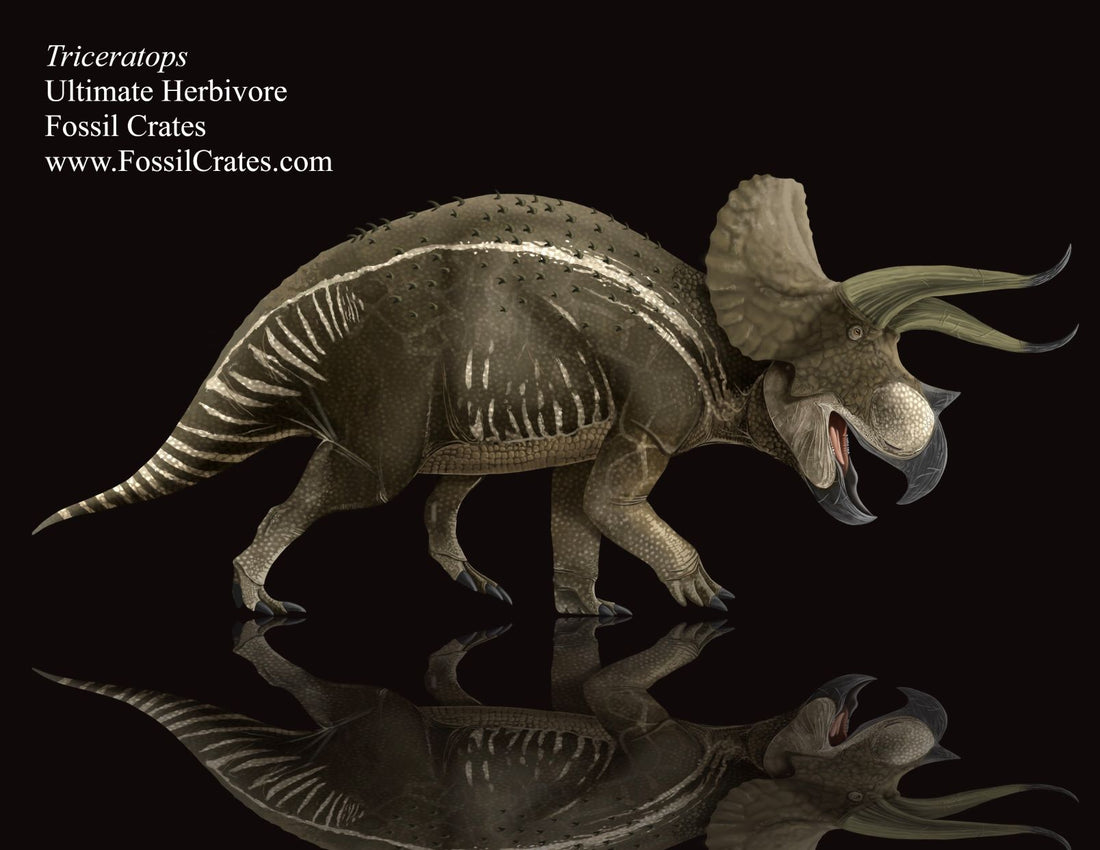Triceratops is a legend among dinosaur fans, and deservedly so! Three times the length and weight of a rhino, with a skull over 8' long, two brow horns 3'+ in length, and a nose horn well over 1', plus a powerful beak and strong legs, Triceratops was an Ultimate Herbivore. An adult Triceratops likely feared nothing!
Triceratops is one of the best-known dinosaurs skeletally, with juveniles through ancient adults having been excavated. Marks found on the face of Triceratops suggest it used its horns like rhinos do today, locking horns and pushing one another to determine dominance. Those same horns would be devastating weapons against would-be predators like Tyrannosaurus. Gouge marks on T. rex bones suggest goring by Triceratops, while healed bites through bone indicate a Tyrannosaurus took a bite! Like in Africa today, where adult elephants and lions rarely fight, the same probably occurred in the Late Cretaceous. However, when they did square off, perhaps because food was scarce, the battle would have been epic. The huge frill of Triceratops would have shielded the vulnerable neck from the ferocious bite of a T. rex. However, the Tyrannosaurus bite was so powerful it could crush through bone! The legs of Triceratops appear to have been slightly bent, allowing it to more easily bring its three-horned face to bear against a predator.
Triceratops may have lived in small herds based on a few fossil finds of small groups of different-sized Triceratops fossils found in one place. Scientists can't positively conclude they did live in herds as the group of animals could have come together because it was the last water source or food supply and then they all died from a natural event. Close cousins of Triceratops, however, have been found in mass kill sites that strongly suggest they lived in herds. I like the thought of a small herd of twenty-or-so Triceratops walking along the coastal plans of northwestern North America like a family of elephants does today.
You can purchase a Triceratops Scaled Skull here and watch a short video here.

